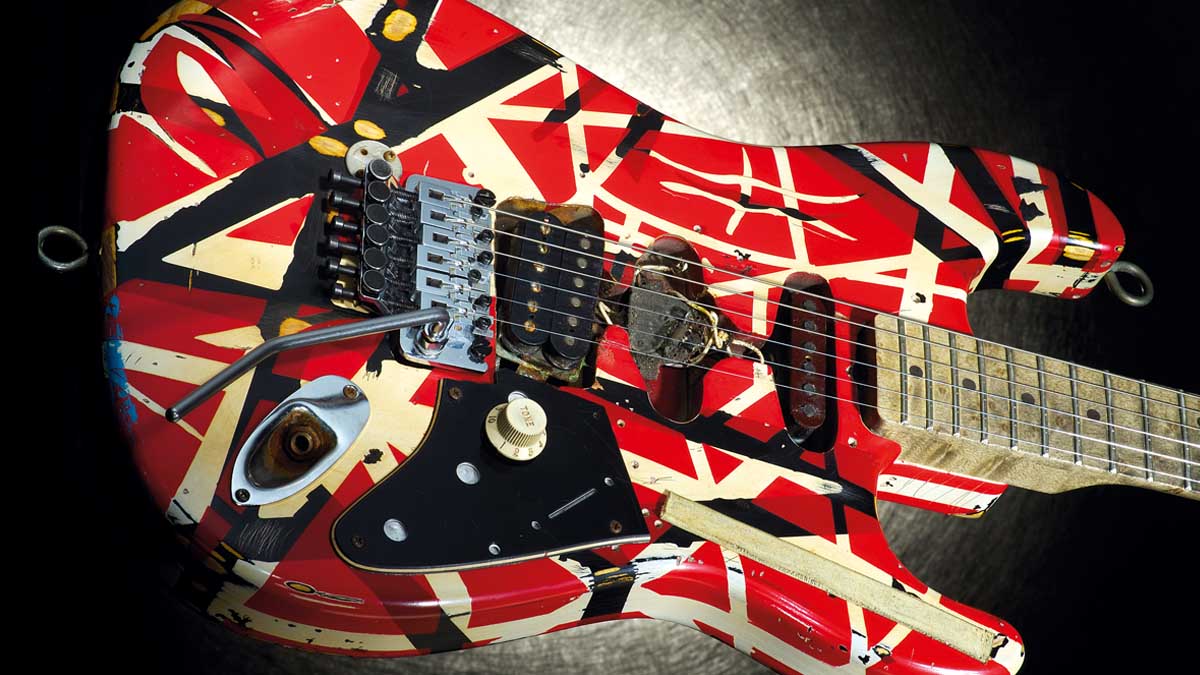“I literally made the change that Eddie Van Halen was known for and was thinking about”: Larry DiMarzio says his revolutionary bridge tweak pre-empted Van Halen’s own mods
The guitar hero’s mods showed an intimate understanding of what makes a guitar sing, and they echoed thoughts DiMarzio was also having

Eddie Van Halen was a revelation when it came to the electric guitar. A shredder of Olympic proportions, he was also a notorious tinkerer of his weapons of choice. His Frankenstein Strat – which marries an ash-bodied Strat with a Gibson PAF humbucker and a Floyd Rose – will forever prove that.
Indeed, his love of modding has just been turned into a full-fledged documentary. But during the decade in which EVH cemented himself as a guitar great, Larry DiMarzio was proving one step ahead of him when it came to rectifying issues with the fabled instrument.
DiMarzio is, of course, best known for his pickup creations which are proudly used today by the likes of Steve Vai, John Petrucci, and Matteo Mancuso. Now, he's spoken at length about his relationship with pickups for the new issue of Guitarist, stating how “they seemed to be the way to compensate for the shortcomings of new guitars” during his early days.
He then single-handedly kickstarted the entire aftermarket pickup industry with his hot-output Super Distortion. But his expertise stretches to other components of the electric guitar too.
In the ’80s, he made a crafty contribution to the shred scene by redesigning the Stratocaster bridge after Fender's production pivot left him reeling.
“Fender decided to start casting Stratocaster bridges and I remember thinking, 'Wow... that's how you screw up a really good product,'” he says.
“So I redesigned the Stratocaster bridge, and guess what? The first thing I did was reduce the string spacing. I went from 2-1/4” to 2-1/8”. So I literally made the change that Eddie [Van Halen was known for and] was thinking about.”
All the latest guitar news, interviews, lessons, reviews, deals and more, direct to your inbox!
One of the many quirks of Eddie’s Franken-build was that the bridge ’bucker was put into the cavity at a slant – similar to how pickups on a modern multiscale guitar are installed. This wasn’t an aesthetic choice, but DiMarzio soon showed it didn’t have to be like that.

“He twisted the pickup to try to get the string balance right because, of course, the polepieces don't line up properly with a 2-1/4” bridge,” DiMarzio continues. “The solution is to change the outside string alignment, which also makes the strings go up the neck better.
“It's more of a straight line from the bridge to the tuning pegs and, of course, through the nut. So the entire bridge works better. And we put tracks on the original DiMarzio bridges so that bridge saddles didn't slide around, so when you use the tremolo, the guitar would come back into tune.
“Needless to say, Floyd Rose's solution worked way better, but it also changed the sound of the guitar, which I didn't like.”
It's the Floyd Rose, rather than DiMarzio’s invention, that has stood the test of time and has been helping shredders dish out acrobatic whammy bar tricks for decades without butchering a guitar’s tuning. Still, DiMarzio showed the nous and insight that has continued to define his career.

As for his and his company's future, the 75-year-old says he now “doesn't have to work.” However, he's hellbent on maintaining the firm’s legacy.
“The legacy of building high-quality guitars is an American art form,” he says, proudly. “You're always dealing with skimping, penny-pinching, and manipulation, and that destroys the integrity of the product. I've always stuck with what I did well. I get up every morning and try to figure out what I'm doing today.”
Larry DiMarzio’s full interview features in the new issue of Guitarist. The magazine also includes stories on Thin Lizzy, and Bob Mould, and takes an in-depth look at Fender's historic pre-CBS Sunburst Stratocasters.
Head to Magazines Direct to buy a physical or digital copy.
A freelance writer with a penchant for music that gets weird, Phil is a regular contributor to Prog, Guitar World, and Total Guitar magazines and is especially keen on shining a light on unknown artists. Outside of the journalism realm, you can find him writing angular riffs in progressive metal band, Prognosis, in which he slings an 8-string Strandberg Boden Original, churning that low string through a variety of tunings. He's also a published author and is currently penning his debut novel which chucks fantasy, mythology and humanity into a great big melting pot.
You must confirm your public display name before commenting
Please logout and then login again, you will then be prompted to enter your display name.

